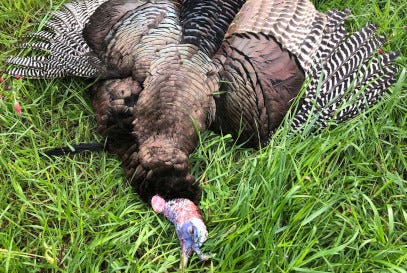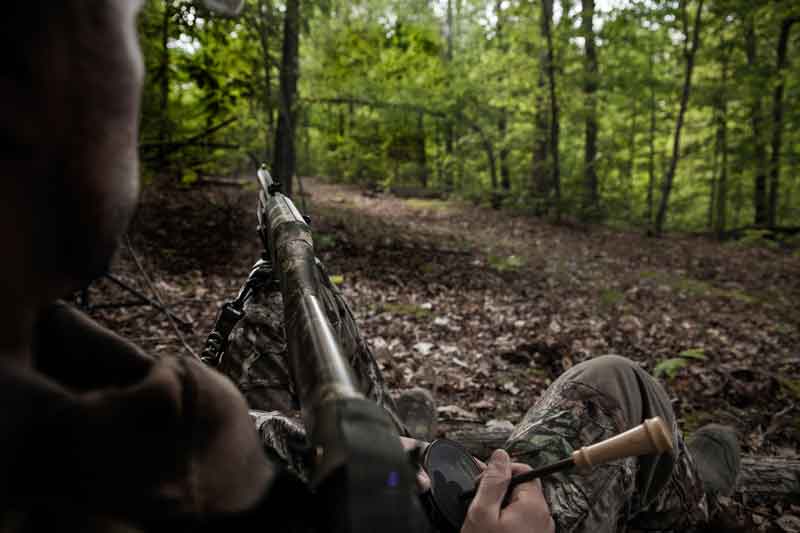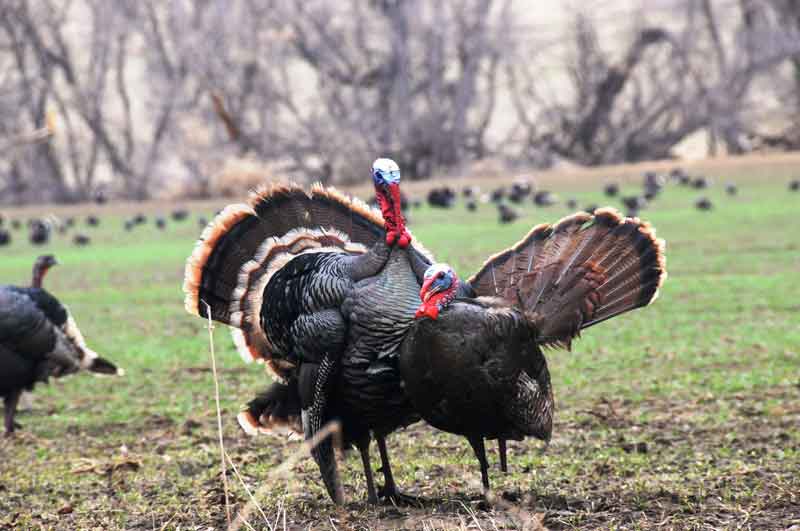- Oct 13, 2015
Fall vs Spring Turkey
While the gobble of a love sick tom can be some of the most exciting hunting of the year, the countless hours spent chasing fall turkeys has taught me more about calling and overall turkey language than the 36 years of chasing spring gobblers. Please note, I am not saying that spring hunting hasn’t taught me or that it’s not serious fun but the window of vocalization from the hens is very limited. So, the overall language learned is minimal, at best.
Many tactics are used in the fall that can also be applied in the spring however with most fall hunting you deal with young birds which, let’s just say, are not the sharpest knives in the drawer at this point in their lives.
I like to locate a flock of hens and juvenile birds. This is normally not too difficult, if there has been a decent hatch. Always remember that these flocks will be oriented around a particular food source, such as soy beans, any type of grass that hold bugs, and of course the almighty king of fall, acorns. I scout by putting on the shoe leather express and using binos along with looking for the normal droppings and scratching to provide me with the best MRI (Most Recent Information).
Once located there are several ways to set up your hunt. I often check the flock and their willingness to answer and come to a call, as as flock, by hitting them with some flock talk. Normally it’s with a mouth style call and a friction call to sound like many different turkeys. I will mix it up with light Kee Kee’s of a young bird, Jake yelps, old hen yelps, and lots of clucking. Oftentimes this somewhat excited flock talk will spark one of the mature bird’s attention and set the flock in motion to my set up.
When this flock talk doesn’t seal the deal then it’s time to set in motion the scatter and call back scenario. I will get as close as I can and run into the flock scattering turkeys in every direction paying close attention to where the fewest amount of turkey flew and how well they were split from the remainder of the flock. Then just move in as close as you can to those one to 5 birds and set the trap. I will give the scattered birds about 10 minutes or so and begin my calling with some light kee kee’s along with soft clucks, once a bird answers I will pick up the calling pace with lost yelping and very emotional kee kee’s. This will usually result in birds running to the set up along with cranking up the remainder of the scattered birds.
The great thing about fall turkey hunting is that it’s a wonderful time to introduce a youngster or first time hunter to turkey hunting as, in most states, either sex is legal. Along with this most fall hunting seasons are all day so, upon getting off work and out of school, there is still time to chase some turkeys during the week. This is also a great time for those who choose go after them with a bow.
Fall gobblers can be a little bit more challenging. The calls I use for Gobblers vary from gobbler yelps - which are a slower, deeper, and more drawn out rhythm to Jake yelps and Kee Kee’s - with short gobbles on a tube call.
If you are serious about learning turkey talk, or just want to have some fun, take up fall turkey hunting - you won’t regret it. Plus, the genourous hunting style may allow you to spend more time with your family and friends. One thing is for sure, it will make you a much more effective spring gobbler hunter.



